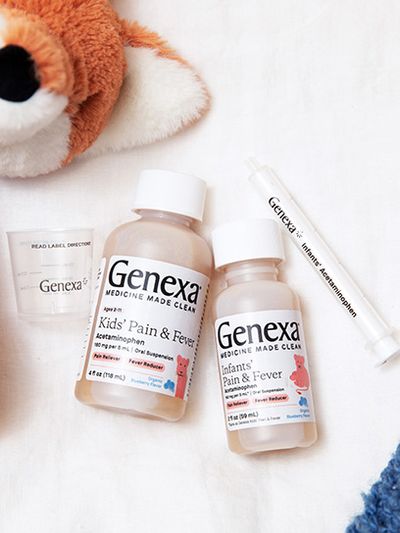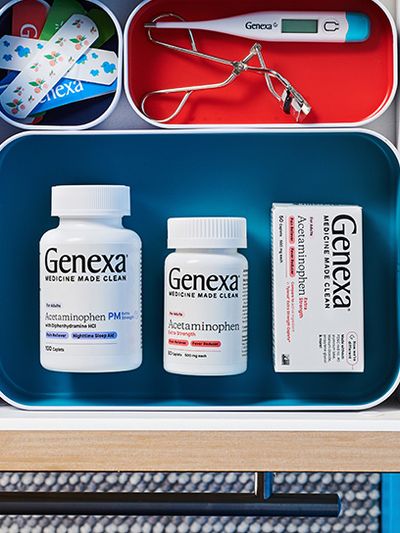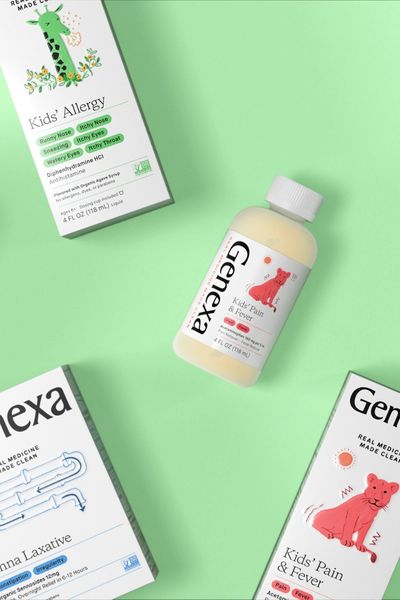Are Infant Sinus Infections And Bloody Nose Related?
Understanding The Relation Between Sinus Infections And A Bloody Nose
Written by Sylvia Zakusilov, NP - Genexa Healthcare Provider & Partner on August 16, 2021
Medically reviewed by Camille Freking, MS Pharmacology
Although nosebleeds are typically the result of trauma, sinus infections can cause them, as well. Any time your infant has a nosebleed, it’s understandable if you feel alarmed. However, you actually usually have nothing to worry about.
Unless you’re noticing nosebleeds frequently or there’s an abnormal amount of blood, it could just be the result of dry air. But if your baby has a sinus infection, there’s a very good chance that is what’s causing the nosebleed.
Read on to learn how nosebleeds typically start, and what you need to do if your baby gets one.
Nosebleeds Up Close
The nose consists of small blood vessels. As such, even minor trauma can result in a major nosebleed. If your baby is prone to picking their nose, you may notice nosebleeds more often. This is due to the nature of noses and the drying of the mucous membrane.
When nose tissue becomes dry and is subsequently picked at, nosebleeds are more probable. The same is true when the air gets dry and causes the mucous membrane to dry and crack. This is made even worse when picking occurs.
It is therefore fairly common for young kids to get bloody noses due to picking. However, sinus infections don’t help matters, either. If your infant has a sinus infection, it’s important to provide the proper treatment.
Caring for Nosebleeds
As mentioned, nosebleeds are pretty common, both in kids and adults. Fortunately, you can usually stop the bleeding if you know how to use the right technique.
Squeeze Gently
In order to safely and effectively stop a nosebleed, begin by squeezing the lower portion of your baby’s nose. This is the soft area of your baby’s nose. Gently squeeze these soft parts together for approximately 10 minutes. In doing so, you are putting constant pressure on the bleeding point. When you pinch, use your index finger and thumb, but always make sure that the pressure you apply is gentle yet firm.
If you notice that your baby’s nosebleed isn’t stopping, simply make minor adjustments to where you’re pinching until you get the bleeding to stop. It’s important to have your child sit up straight while breathing through their mouth as you perform this procedure.
It’s possible that your baby’s nose will stop bleeding for a while, only to start back up again. If this happens, simply apply the above steps again until you get the bleeding to stop. Repeat as needed, but don’t avoid making a doctor’s appointment if the bleeding is happening frequently.
There may be an underlying issue that needs to be addressed. The sooner that it is identified, the better chance of successful treatment.
Use Gauze
It’s also possible that the pressure technique won’t work in relieving your baby’s nosebleed. If this happens, you can try using gauze to stop any bleeding. To do this, take a piece of gauze and wet it by adding a few drops of water to it.
Some parents prefer to use petroleum jelly instead of water, but it really depends on what your baby tolerates. When ready, place the gauze into the nostril that blood is coming out of. At this point, you can try the pinch/pressure technique again.
Because the gauze helps to provide more pressure when you pinch, many parents find this method to be effective in stopping pesky nosebleeds.
Nose Drops
If you aren’t having any success with the above techniques, you might need to invest in decongestant nose drops. Instead of using water or petroleum jelly on gauze, place three drops of decongestant nose drops on it.
When you insert the gauze in your baby’s nose, the nose drop formula works to shrink the blood vessels, thus assisting in stopping the nosebleed.
With all that said, decongestant nose drops should not be used on children younger than 1-year-old. If your child is less than a year old, stick with the water/petroleum jelly and gauze techniques. You can always use a small piece of paper towel if you don’t have any gauze handy.
Whichever material you use, be sure to hold for 10 minutes to give your baby’s nose time to stop bleeding.
Preventing Nosebleeds
Dry air is a leading cause of nosebleeds at home. Your infant baby isn’t immune to this, so it’s important to take the proper steps to combat dry air if it’s becoming a problem. One of the best ways to do this is by utilizing a humidifier.
This device will add moisture to the air in your home and keep your baby’s nose from getting dry and bleeding. At the very least, you may want to add a humidifier to your baby’s room. This will allow them to breathe moist air while they sleep, reducing the likelihood of nosebleeds.
While dry air is one of the main culprits behind nosebleeds, there are other potential causes that you need to be aware of. For example, when you blow your baby’s nose, it’s important to do so gently.
Forceful blowing can easily lead to nosebleeds. If your little one is having trouble figuring out the right amount of force to use, consider switching to a nose suction bulb for the time being.
However, you need to make sure that you don’t insert the tip too far into your baby’s nostrils. Once it’s inside, you need to be mindful of your movement. Adjusting the tip using too much force can scratch the blood vessels and lead to a nosebleed.
Sinus Infections: What To Do
How you treat your infant’s sinus infection largely depends on its cause. You’ll know if your baby has a sinus infection if they exhibit the following symptoms (although some can’t be communicated quite as clearly depending on your child’s age):
- Postnasal drip (drainage down back of throat)
- Thick mucus draining from nose
- Painful/sore sinuses
- Loss of smell
- Stuffy nose
- Headache
- Cough
- Fever
And as mentioned, you might notice nosebleeds accompanying these symptoms, as well. When treating a sinus infection, it’s important to understand its cause. In some cases, bacteria are responsible for the infection, while others are the result of allergies.
If bacteria is the culprit, antibiotics may need to be prescribed by your family pediatrician. If allergies are at play, you can pick up over-the-counter infant allergy medicine to help treat your baby’s symptoms.
However, you want to use caution in doing so. Many cheap over-the-counter medications today use artificial inactive ingredients and potentially harmful chemicals. It’s best to avoid these types altogether and look for an organic over-the-counter alternative.
Summary
Now that you know the best way to approach nosebleeds, you can ensure that you give your baby the proper treatment. As always, if you are uncertain what’s causing the nosebleeds or are at all concerned about them, don’t hesitate to contact your baby’s pediatrician.
Any delays could lead to bigger issues down the road. By addressing it right away, you can ensure the health and safety of your child.
If you try all of the methods outlined above and still aren’t having success in stopping your child’s nosebleed, there could be something else at play that needs to be addressed. By making an appointment with the pediatrician, you can be sure to rule out any dangers and get to the root cause of the nosebleeds.





